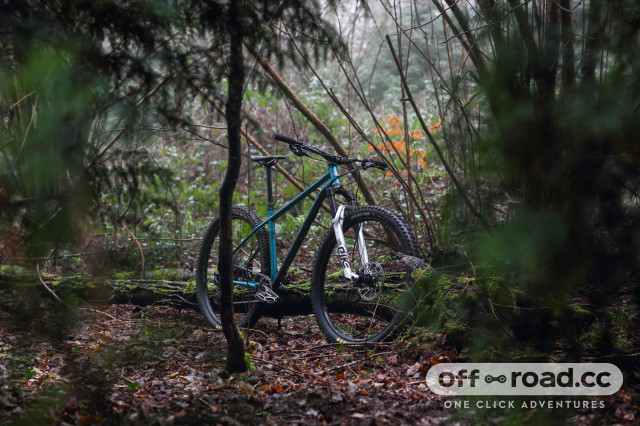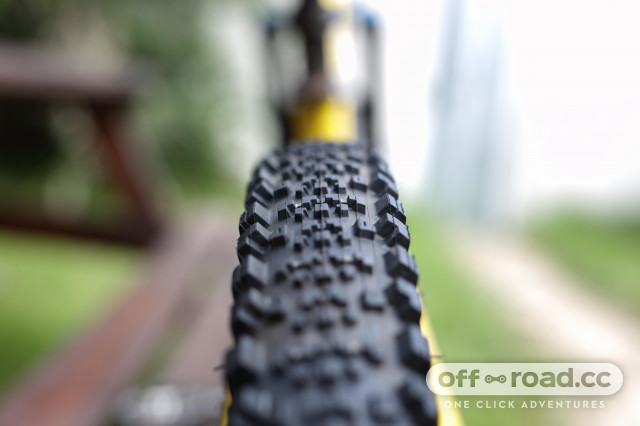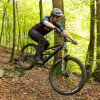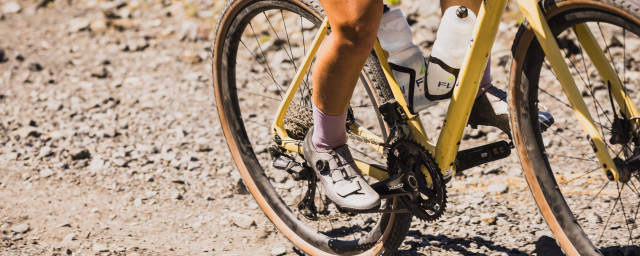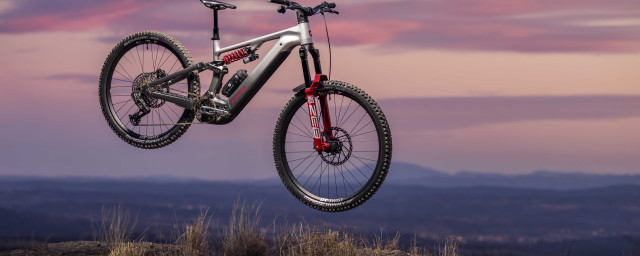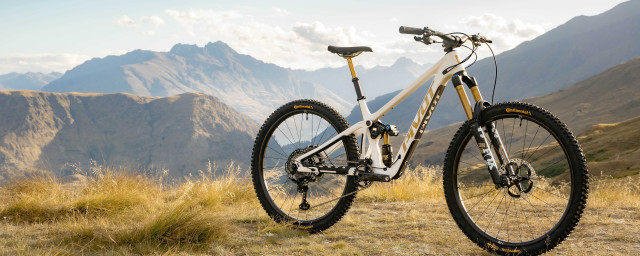11 mountain bike things you think you need... But probably don't

The mountain bike industry is forever coming up with many new and shiny things to tempt you from parting with your hard earned cash. However, a lot of the time the existing tech or what you're already riding works perfectly fine and will continue to do so for the foreseeable future. So to stop you from suffering some serious gear acquisition syndrome, here are some things you don't really need.
- 10 worst bits of mountain bike riding advice I’ve been given by randoms
- Should I turn my 29er into a mullet bike?
All of the gears
12-speed shifting can feel like a bit of a luxury to many as it's often found on pricier bikes, even though it's seeing that lovely, lovely trickle-down effect. That doesn't mean you should instantly bin your trusty 10 or 11-speed drivetrain far from it, in fact.
Brands like Shimano offer an 11-speed cassette that almost directly matches the range of those fancy 12-speed dinner plates only sacrificing slightly smoother jumps between gears. You could even go proper old school and opt for a 9-speed cassette from the likes of microSHIFT.
While it may not sound like it, there are some clear benefits to running fewer gears. Namely, fatter cogs and chunkier chains which in turn are much stronger. It's also less finicky when setting up your mech, making it easier to set up and go.
Electronic shifting
Something else that we've seen benefit from the trickle-down effect is electronic shifting with SRAM's GX Eagle AXS upgrade kit. Yes, not having to worry about your cable's tension is a wonderful thing and we all love a super tidy cockpit but you'll have to chuck a fair wad of cash for the luxury. Not only will you then have to worry about battery life but no matter how hard you try to forget it, you'll also have the worry of wrecking your futuristic yet very expensive derailleur firmly in the back of your mind.
All of the travel
It's super easy to take inspiration from our EWS winning idols who are running 170mm of travel or more and think that you need exactly the same. Remember, those guys are at the top of their game and tackling some pretty ridiculous terrain while doing their utmost to win races.
All too often I see folk on their 180mm Nukeproof Gigas riding trails that can easily be handled on a hardtail and it could even be a lot more fun for those who do. Big travel is also a big factor in how much your bike weighs, and it can dull down the fun factor on mellower trails.
Plus, in this day and age, geometry is king. A well-shaped bike can offer a much more capable and confident ride than a long travel bike with a conservative geometry. You'll be very impressed with what you can get up to on an aggressive hardtail.
That goes for Kashima coated stanchions too. They definitely look cool, are harder wearing and smoother than your run of the mill stanchions but the gains you get from spending an extra few hundred pounds are fairly marginal.
All of the geometry
Long, slack and low are three words that brands throw about all over the place when describing their hottest and newest bike. Generally, the push for longer, lower and slacker bikes is a great thing to see since being stuck with those short bikes of the naughties but with companies pushing the geometry boundaries, it is getting a little crazy.
Bikes are getting longer and longer, and that can have a knock-on effect on weight distribution. It's important to weight the front wheel in a range of situations but with the front wheel stretching further ahead, it takes more of a conscious effort. That can result in reduced grip and a lifting front end when wrenching up climbs.
Then, head angles are getting slacker which can sometimes lead to a light, wandery steering characteristic and while a low bottom bracket gives awesome stability in the corners, you'll be whacking those pedals an awful lot as you crank through techy sections.
The list goes on but what's important is to find a bike that ticks all of your boxes in terms of shape and what you plan on riding aboard it. A mega stretchy, super progressive geometry might well work for you but it's not a rabbit hole you want to dive into purely in the pursuit of cool.
All of the carbon
The industry puts carbon on quite the pedestal, making carbon bikes look sexier than their alloy counterparts and taking full advantage of the materials flexy, stiff and lightweight properties. Don't be fooled though as just because something is made from carbon fibre, it doesn't mean that it's any better than a metal product, or that it's actually any good.
Other than the ability to build flex into certain parts of a bike, something you'll see mostly on cross country hardtails or bikes with fancy flex stays you'll not likely notice a difference in the ride characteristic between an alloy or carbon frame, save for the weight. However, materials such as steel can be formed and tuned, like carbon, to offer flex and stiffness in particular areas.
Speaking of flex, it's more noticeable on a handlebar, as brands tend to build it into a carbon bar to absorb trail chatter. But don't forget, companies such as Spank make alloy handlebars with clever foam cores to achieve the very same goal at a lower price.
Also, while it can be repaired by a specialist, carbon isn't recyclable so by opting for an alternative component material, you'll be doing your bit for the planet. Though saying all of that, I'm pretty certain that everyone in the Off-road.cc team rides a carbon bike...
The fattest, knobbliest and most expensivest tyres
Fat, knobby tyres always look right at home on a mountain bike but they’re not always necessary. Starting with tyre width, wider tyres mean lower pressures and more grip right? Well… Yes but it also means extra weight and sometimes the tyre can roll about on its carcass and that's something you really don't want. Often, narrower tyres can provide more support as the tyre walls aren’t as tall. However, it’s a case of horses for causes. A big 2.6” tyres can work wonders on the back of a hardtail.
As for knobbliest tyres, it’s important to consider the conditions you’re riding in before shelling out the cash for that Maxxis Shorty. Bigger knobs equal more rolling resistance and if you’re riding includes some climbing, sprinting or general pedalling about, you’ll be putting in more effort than you need to. Taller knobs also have the tendency to deform and roll over in harder conditions. That’ll make your bike feel nervous and actually reduce the level of grip on offer. You'll be very surprised with how much faster you'll pedal on a semi-slick and the grip you'll have, especially in the dry.
Then price, tyres are getting more expensive and while brands like Maxxis and Schwalbe offer some great tyres (see the Assegai, Minion DHF and Magic Mary) but they'll set you back around £75 an end. There are a select handful of brands, however, that offer tyres that are as good, if not better than the big brands that are a good chunk cheaper. A great example of a budget-friendly tyre brand with superb tyres is WTB with the Verdict, also, take a look at Vittoria's offering.
The widest handlebar
When shopping for a handlebar it's easy to get caught up in the 'wider is better' way of thinking and to a point, wider can be better. Of course, not only do wider bars add weight to your bike but they actually might not work for you, especially if you’re a smaller person. They can stretch your riding position out making tight corners a pretty tricky task and stop your arms from absorbing bumps as well as they should. You might be surprised to find that some EWS riders cut their bars as short as 760mm and have said to have benefitted from much more control.
A great way of finding a starting point for a bar width that’ll work for you is to get into the push up position (to mimic full bump absorption on the bike) while holding a tape measure under your hands with one end reaching the very outer of your palm. Then, note where the outer edge of your other hand sits on the tape measure and there you have it, a bar width that will work for you.
Full face helmets on a trail ride
Before getting any further with this one, safety definitely comes first and if you’re more comfortable riding in a full face regardless of the riding you’re doing, power to you.
Yep, I agree, they look super cool but more often than not, full face helmets are much weightier than their open face counterparts and on your general trail ride, that can put painful pressure on your neck over long periods of time. They’re also much warmer and can be less comfortable, as hard as they try to be.
Before choosing my preferred helmet for a ride, I’ll ask myself whether the ride will be uplifted, if I’m going to be pushing myself (in terrain or skill) and how fast I’ll likely be travelling on the bike. If the answer to those questions are ‘yes’, ‘definitely’ and ‘really bloody fast’, then I know I’m in full face territory.
While I am a purveyor of the open face lid, it's handy to have a full facer in the shed just in case you fancy a trip to the bike park and don't want to risk losing your pearly whites.
Tyre inserts
Tyre inserts have come about off the back of the shift towards tubeless tyres. While awesome for protecting your rims through proper fast and chunky sections and potentially improving your ride, they can add upwards of 500g to your bike. Plus, they can be an absolute pain to fit and be a pricey endeavour.
That's not all because many inserts aren't designed to be ridden on if you suffer a game-ending, irreparable puncture. So if you are forced to bung in a tube, you'll have to wear your insert like some kind of foamy necklace as you pedal back to the car.
A new bike
Okay, okay, n+1 is and always will be a thought at the back of every mountain biker’s mind but take a step back and ask yourself how your current bike is treating you. If your bike is doing exactly what you want, you’re happy with the geometry and the travel on offer is suiting you well, why spend tonnes of money on a shiny new bike?
Even if there is something that you’re not too fond of on your current bike, it’s likely that you’ll be able to change that with the use of reach/angle adjusting headsets, offset bushings and a fork’s travel can be adjusted by a suspension tech (although not every fork). On some bikes, you can even change the rear travel with the use of special, third party linkages. The array of things you can pick up to change the way your bike rides is rather impressive and frankly, for another article.
Jumping know-how
Alright, I've digressed a little here but hear me out. Seeing folk hit mega jumps is something that's incredibly easy to get jealous over but if air time isn't for you, there's nothing to be ashamed of. Mountain biking is a multi-faceted sport so if you prefer life with your wheels firmly glued to the ground, I'm sure you've found a part of mountain biking that takes the place of a craving for air time.
If you do have your eyes set on soaring through the air like a knobbly tyred eagle, start small, build up and maybe get some coaching from a professional.





